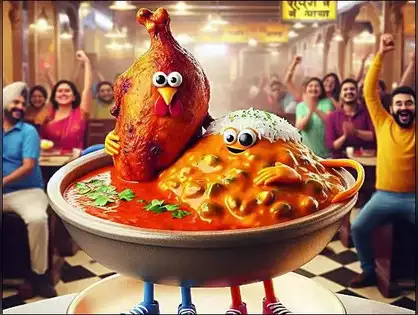Moti Mahal and Daryaganj’s tussle over Butter Chicken and Dal Makhani throws up lessons, and aroma
A tussle between the origins of two signature dishes throws up lessons, and aroma
New Delhi, January 23, dmanewsdesk: Two delectable dishes that have come to represent north Indian cuisine around the world are now embroiled in a dispute that may well modify the old saw that links the stomach to the heart, and to add brain, intellect and IP to the mix.
Restaurant chains Moti Mahal and Daryaganj each claim to be the original inventor of both butter chicken and dal makhani. While Moti Mahal is not exactly claiming to exercise IP rights over these two dishes, and thereby bar others from cooking up the dish without a licence from them, they want Daryaganj to know its place and stop claiming they invented the dishes.
Moti Mahal has sought an injunctionagainst Daryaganj using the tag line, ‘Inventors of Butter Chicken and Dal Makhani’. The case is now stewing in Delhi High Court.
The issue at stake is reputation, not IP. Moti Mahal claims that its founder Kundan Lal Gujral founded the restaurant, tandoori chicken, and a buttery sauce in which to preserve leftover pieces of tandoori chicken, and later used the same sauce for black lentils, to cre ate another unique dish: dal makhani.
The owners of Daryaganj restaurant do not wish to deny Kundan Lal Gujral any of this inventive glory. Its claim is that its founder, Kundan Lal Jaggi, was his namesake’s partner when they founded the original Moti Mahal in Peshawar, and that, as such, Daryaganj’s claim to inventive originality cannot be brushed aside like the crumbs of tandoori roti.
To some, such a dispute over fav foods might leave a bad taste in the mouth. They overlook some fine points brought into the public domain, only thanks to the controversy.
At the most obvious level, let us understand that what seems obvious might well prove false. Take the Hindi saying, ‘Dal mein kuchh kala hai (There’s something black in the dal). This is meant to convey that something is a little off, even if things look all right at a glance. But dal makhani is made of black lentils. Seeing something black in this pot of dal is very much proper. The problem would be if there was nothing black in the dish.
It is also interesting to note that but ter chicken and dal makhani share a common sauce. Vegetarians and meateaters may see themselves as very different beings, and even see their difference as worthy of being defended, at times, with violence. They would do well to remember that butter chicken and dal makhani share a common ground in their protein-rich goodness and a common sauce as well. This creamy sauce, it goes without saying, is thicker than blood.
The most abundant bird species in the world is Gallus gallus domesticus, the common chicken. There are an estimated 24 billion of them on the planet, 3 per 1 human being. Their numbers are so large because they are a favoured dish on the dining table. To meet the demand for cheap protein, chickens are farmed around the world. Clearly, demand for chicken as food and supply of chicken provide a good example of what is not a zero-sum game.
Chickens are superior to any other known means of converting starch into protein. This is precisely why the current obsession of policymakers with ethanol is entirely misplaced. Once we are locked into a particular industrial capacity for producing ethanol and blending it into petrol, a drought, an affliction of disease or locusts of the corn crop could send food prices spiralling. The corn normally available for chickenfeed would go to ethanol manufacture, and chicken, more than popcorn, would go up in price.
Another insight offered up by the Moti Mahal-Daryaganj dispute is that what we consider quintessentially ‘ours’ could have a distant, extra-territorial origin. Both butter chicken and dal makhani originated in Peshawar. India and Pakistan, evidently, share a common heritage a whole lot more recent than Harappa and Mohenjo Daro.
The dispute also makes the point that even the darkest disaster can contain points of light. It was the tragedy of Partition that brought the makers of butter chicken and dal makhani to India.
We should also note the delectable sauce that underlies both dishes was con cocted not so much to create a savoury delight but to preserve leftovers. Pieces of tandoori chicken left over after being served to those craving this form of chicken were slipped into this sauce, prevented from dehydrating into tasteless lumps, and served the next day. How delightful that the message of conservation and recycling also gets a leg-up from this battle of restaurants.
Finally, let us appreciate that reputation matters, beyond intellectual property. The integrity of a claim a business makes to its customers, especially one that infringes on the reputation of arival, matters a whole lot.
Ideally, business should be conducted in a spirit of live and let live — forget both James Bond and that raucous chicken cluck-clucking its outrage.
Source: The Economic Times




